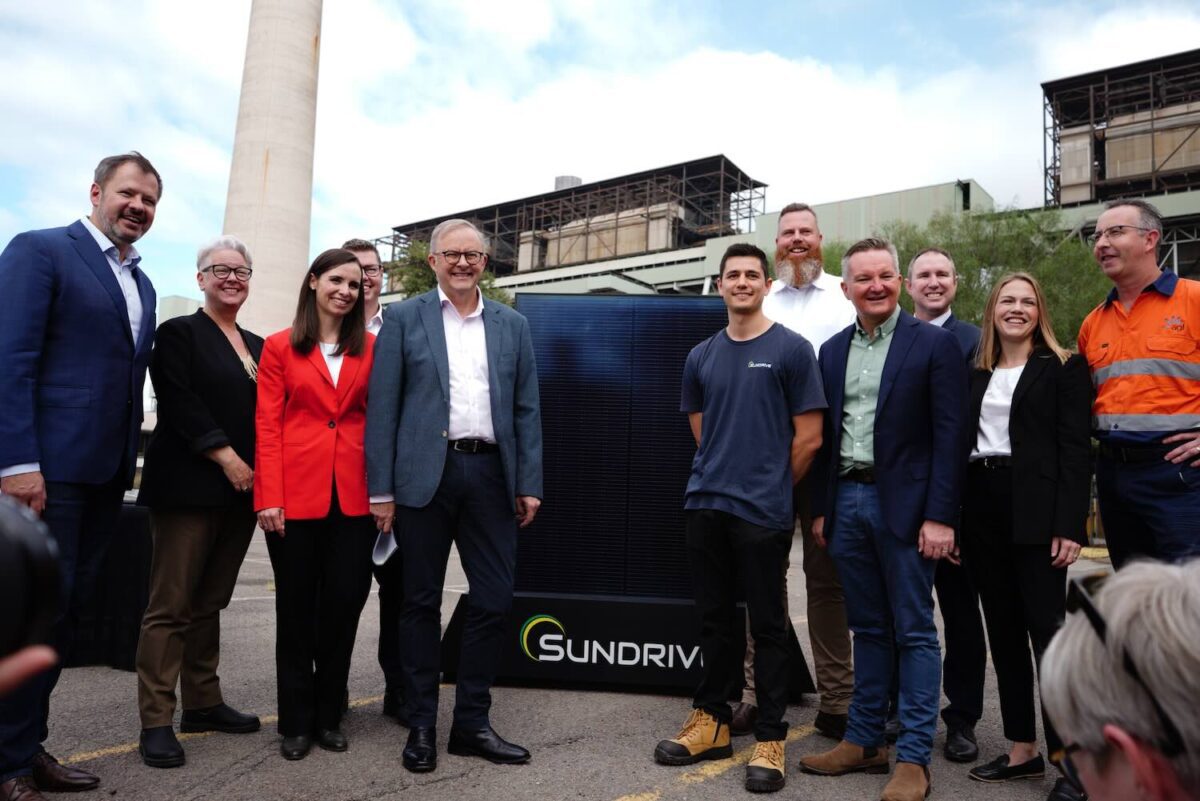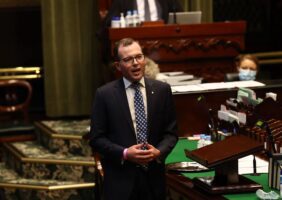Prime minister Anthony Albanese has pledged $1 billion in production subsidies and grants to build a solar supply chain on Australian soil in a major pre-budget announcement made from New South Wales coal country.
Australia “should not be the last link in a global supply chain built on an Australian invention,” Albanese said in a speech delivered at the recently closed Liddell coal-fired power station.
“This announcement today is, I think, one of the most significant that will be made during our term, and I’m very proud to be a part of it,” Albanese told the press pack at Liddell.
“I want a future made in Australia. I want a future made in our regions. Places like the Hunter that have powered our nation for more than a century will power our future.
“We have every metal and critical mineral necessary to be a central player in the net zero transformation, and a proven track record as a reliable energy producer and exporter.
“Historically, Australia has been good at going from the mining pit to port, and long may this continue.
“But the Australian government will also invest in the path from pit to panels and capture more value for our economy and workforce.”
The announcement follows the release in February of the first round of findings from the landmark $1.2 million Silicon to Solar Study – a “road map” to set Australian on the path to make its own solar.
The ARENA backed S2S study was developed by the Australian PV Institute (APVI) working with Deloitte and a group of key industry stakeholders including The Australian Centre for Advanced Photovoltaics (ACAP), AGL, Aspiradac, Energus, Siemens, SunDrive, Tindo Solar and 5B.
As RenewEconomy reported at the time, the report found that establishing manufacturing capability of 10GW of poly-silicon – a key raw material for making PV – and 5GW across the other steps of the value chain (ingots/wafers, solar cells and panels) is “credible and feasible” with the right government policy support.
In terms of the financial support needed to develop a fully integrated domestic manufacturing capability of minimum viable scale across the value chain, the report gave an estimate of $A3.2 billion over a 10-year production period.
“We have created the innovation and then seen all the value being added offshore,” Albanese told a press conference on Thursday.
“Today we have around about 90% of the world’s solar panels produced in just one country in just one country, China, and then exported to around the world.
“We missed the opportunities. We are not going to miss the opportunities of this generation. And that is what our support is about.”
Albanese says Arena will consult industry – and no doubt the work done in the above study – to design and deliver the Solar Sunshot program and funding, along with the government.
“Arena will look at the entire supply chain from ingots and wafers to cells, module assembly and related components, including solar glass, inverters, advanced deployment technology and solar innovation.”
Joining the PM at the former coal plant in the Hunter, federal energy minister Chris Bowen said the $1 billion in funding is about “creating Australian jobs to help manufacture” what will be a crucial technology to the shift to net zero.
“We know that the world’s climate emergency is Australia’s jobs opportunity … $1bn to support Australian manufacturing in solar technology will help seize that opportunity,” he said.
“There’s many more announcements to come for this site, but for just this announcement there will be more people employed here than were employed at Liddell [when it was an operating coal plant].”
The pledge to spend big on solar sovereignty follows legislation on Wednesday to establish a Net Zero Authority, charged with promoting an “orderly and positive” transition to a decarbonised economy.
“The Authority will be a partner, on behalf of government, with industry and investors. It will help to get the big transformational projects happening,” said the assistant minister to the PM, Patrick Gorman, on Wednesday.
“The Authority will work with project proponents, state governments and others to get projects to investment decision. It will mobilise public and private financing support, address enabling infrastructure needs and navigate regulatory processes.
“The Authority will be the government shop-front for industry and investors. Helping as they seize the opportunities of Australia’s transformation to a net zero economy.”
Alongside the federal government announcement, NSW energy minister Penny Sharpe nnounced that the state Labor government will deliver its own Net Zero Manufacturing Initiative, with a $275 million first round now open.
A second round will work with industry to leverage government procurement to offer offtake agreements to local manufacturers of renewable products and low carbon materials.
“It’s great to be able to align NSW and Commonwealth funding to support clean energy manufacturing,” Sharpe said.
“This will see NSW households putting NSW made solar panels on their roofs to deliver long term energy bill savings and a strong domestic renewable manufacturing sector.”
A major shot in the arm
Clean Energy Council chief Kane Thornton says the Solar Sunshot funding delivers “a major shot in the arm” to Australia’s potential as a renewable energy superpower.
“Australia has led the rest of the world in the research, development and uptake of rooftop solar systems, but we have thus far missed the opportunity to manufacture more of these components here at home. This is about to change,” Thornton said on Thursday.
“We are a country rich in renewable energy resources, such as land, coastline and sunshine that have yet to be harnessed to their full potential.
“The missing piece of the puzzle here is establishing a strong sovereign manufacturing capability that captures this innovation and expertise to meet more of the extraordinary demand, both here and overseas, for solar products.
“We look forward to working with the government on establishing a detailed design and timely implementation of this policy.”
Australian solar innovator 5B also welcomed the news as “a very positive development” for the Australian economy and for the company, which makes prefabricated and rapid-deploy solar module arrays in Adelaide and is building a factory in India.
“Strategic policies like this have catalysed solar manufacturers in overseas markets, so we know how significant a boost it provides for home-grown companies like 5B,” said CEO David Griffin.
“We’re incredibly proud to be an Australian solar manufacturer – the breadth and depth of skills and expertise in our Adelaide Manufacturing Centre of Excellence has been instrumental in the development of a world-class solar solution which lowers the capex and opex cost of solar farm development, while making it safer and faster.
“A lot of our experts in Adelaide are former automotive workers who have transitioned into the solar industry – they will be really encouraged by this announcement, as we all are, to see the government’s recognition of the critical role that manufacturing plays in the economy, particularly in strategic industries like solar,” Griffin said.
“More broadly, this strategic policy announcement will be an important accelerant in the race to ultra low-cost solar, which underpins the development of a globally competitive green hydrogen and green metals industry in Australia.
“Manufacturing at scale allows local solar manufacturers like 5B to produce more units at a lower cost, and is a critical component in driving down the installed cost of renewables. You need ultra low-cost solar to produce globally competitive green hydrogen and green metals.”










